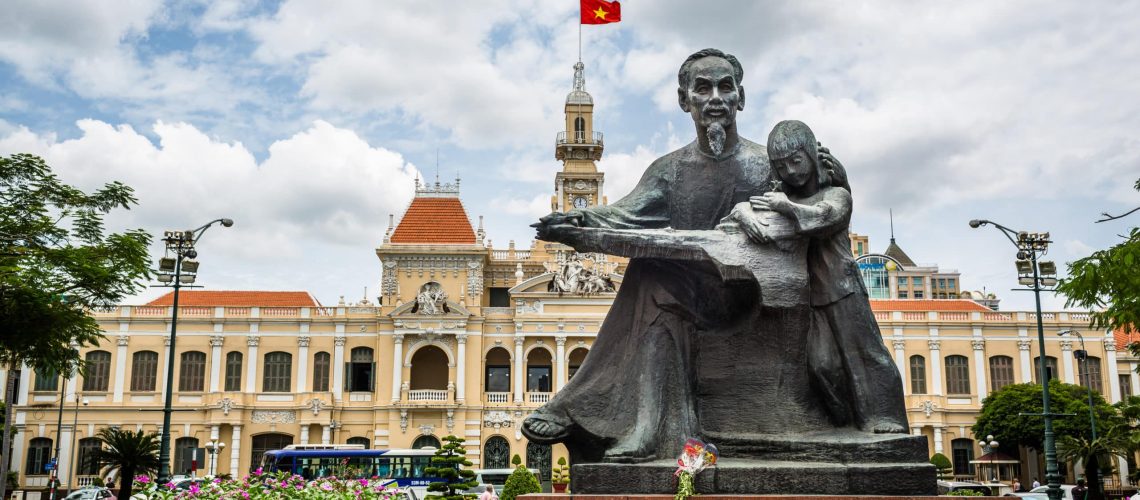April 30th marks Reunification Day in Vietnam. A public holiday, it celebrates the fall of the Saigon government on that date in 1975, setting in motion the process of unifying north and south Vietnam.
Bringing about the end of the American War, it is thus a time to commemorate veterans’ sacrifices, celebrate national pride, and, more broadly, to rejoice in the long-lasting peace that has been upheld since that terrible time of strife. Many Vietnamese take the opportunity of a day off to visit hometowns and enjoy feasts with their families. In Hanoi, Ho Chi Minh, and other cities, there are organised parades celebrating Vietnamese independence and exonerating the life of Ho Chi Minh, with plenty of flags waving proudly.
With the occasion in mind, we thought we would run through some of the fantastic museums and historical sites to visit in Vietnam. Curious visitors interested in all things historical are spoilt for choice for places to offer insights into the Vietnam War. While many sites display harrowing tales of the horrors of war, we believe it’s valuable for travellers to delve deep into the country’s narrative to better understand how the conflict has shaped modern Vietnam.
Note: The Vietnam War is referred to as the American War in Vietnam
War Remnants Museum
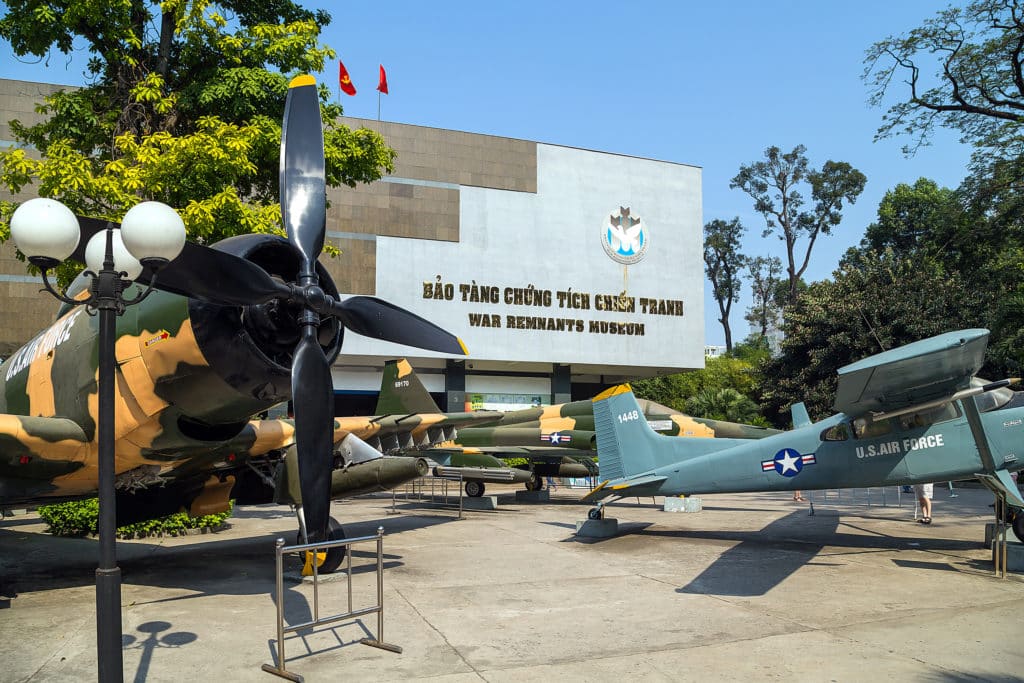
The War Remnants Museum tells the traumatic story of the long conflict between the US and Vietnam, beginning from aggressions in 1945 up until the end of the war in 1975. Located in Ho Chi Minh, the museum was once known as the “Museum of American War Crimes”. Through a series of exhibits, the museum is a shocking reminder of the devastation that the war caused – with the majority of rooms telling the narrative of war through a series of graphic images that lay bare the war’s brutal nature.
There are also military objects on display, from tanks to a helicopter and other assorted American military equipment. The museum is also part of an ongoing campaign seeking donations for ‘Agent Orange’ victims. A particularly moving exhibit details the long-term detrimental effects of some 5 million people who were subject to the dangerous chemical. Travellers should not miss this captivating insight into Vietnamese history but should be prepared to be moved by the humbling subject matter.
Ho Chi Minh Museum
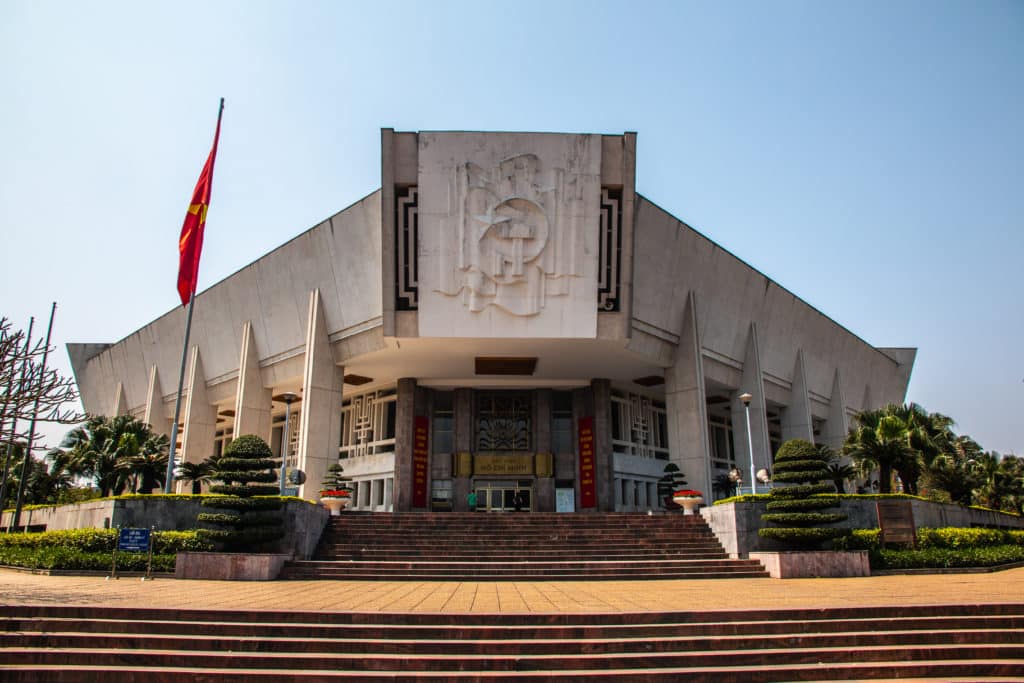
Inseparable from the 20th-century history of Vietnam, the Ho Chi Minh Museum in Hanoi documents the life and work of ‘Uncle Ho’, the father of Vietnam. It is part of a wider complex in Hanoi that also features the Ho Chi Minh Mausoleum, though this is a separate attraction.
Though connected with the American War, the Ho Chi Minh Museum’s purview covers the whole of the first comrade’s life, detailing his lifelong revolutionary struggle against foreign powers. Through a series of exhibits, the museum takes a chronological view of his life. Various exhibits cover his upbringing, his international travels pursuing worldwide revolution, his influences on international communism, the founding principles of the Vietnamese Communist Party, and his role as a national figurehead.
The museum consists of a collection of artefacts, miniatures and various gifts gathered nationally and internationally that help bring the domineering figure to life. Ho Chi Minh has left an indelible mark in the popular imagination and consciousness of Vietnam. This is the best place to appreciate the tremendous impact he had on the nation and its people.
Cu Chi Tunnels
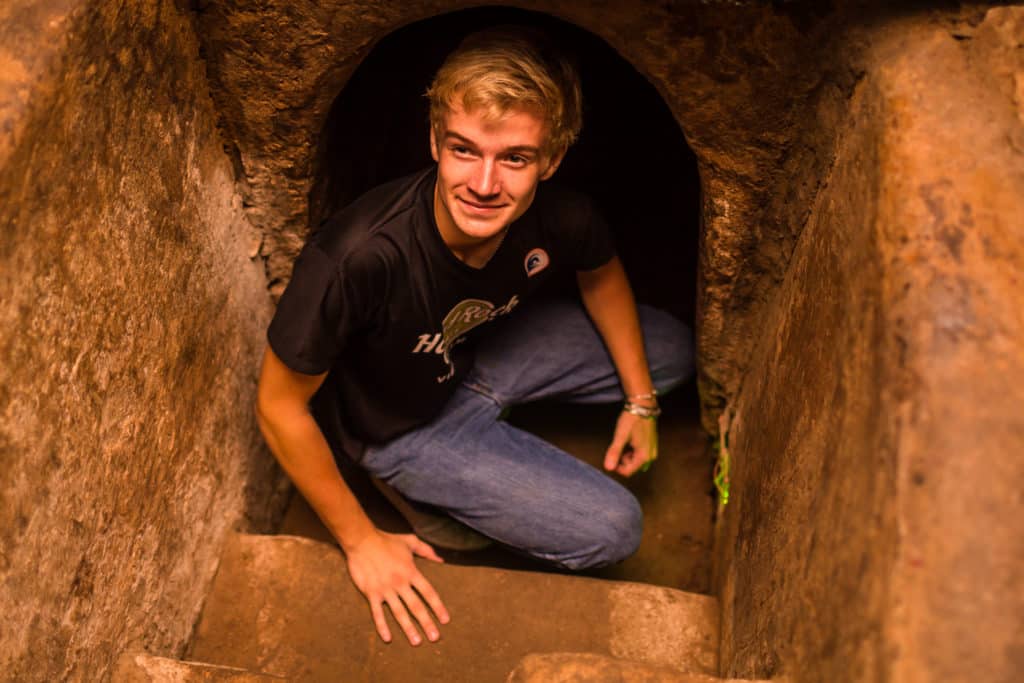
The Cu Chi tunnels are a complex network of underground tunnels that served as living quarters for Viet Cong soldiers. They are a popular excursion for travellers just a short drive away from Ho Chi Minh City.
As part of the guerrilla war effort, the tunnels were used as hiding spots during the conflict, as well as serving as communication and supply routes, hospitals, food and weapon stores and living quarters for numerous North Vietnamese fighters.
The museum is an incredible immersive experience as visitors get to grips with what life must have been like for the people living in these conditions. During periods of heavy bombing, the Vietnamese had to stay in cramped conditions for days at a time, coping with disease and ant and rodent infestations. Travellers learn about all the different coping mechanisms the ingenious soldiers came up with, as well as getting to see first-hand examples of booby traps and devices designed to hamper the American war effort.
There is over 100km of tunnels in the network, and travellers get to experience the cramped conditions for themselves by crawling through some sections. Widened and supported for tourists, the tunnels still offer an alarming realisation for visitors of the extreme circumstances. Those who visit do not have to go through the tunnels if they are nervous, but emergency exit points have been built every 10m for those who find it too challenging.
What makes this tour extra special is that the guides often have first-hand experience living in the tunnels during the war. They offer unparalleled access to this incredible moment in history to tourists.
Hoa Lo Prison
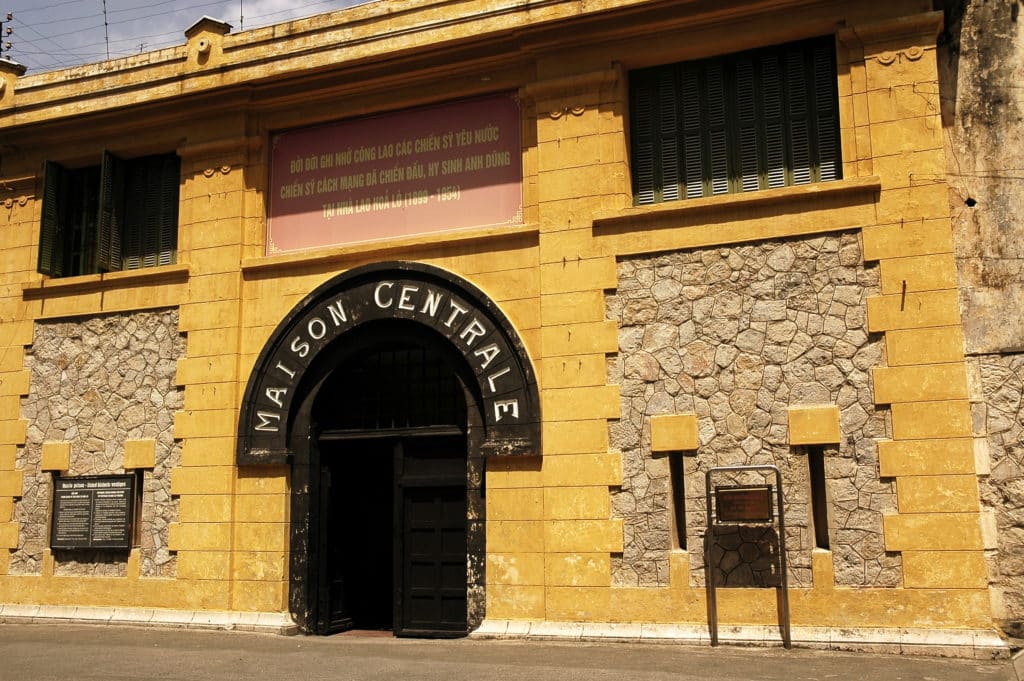
Known to American POWs as ‘the Hanoi Hilton’, the prison was first used by the French colonists for political prisoners, and later by North Vietnam for US prisoners of war.
Most of Hoa Lo Prison has been demolished or reappropriated to different building projects, and the museum today exists in what was once the old gatehouse. It wasn’t the most effective of prisons, with hundreds of escapees over the years it was in operation. Yet, those that were held captive under the French were subject to terrible treatment, including torture. Much of the exhibits focus on prison life under French rule until the mid-1950s, showing visitors the cruel conditions for inmates. A particularly gruesome relic is the French guillotine that was used to behead Vietnamese political prisoners.
There are also exhibits covering its time as a prison for American pilots captured during the Vietnam War. Significant detainees included the late senator John McCain and the first US ambassador to a unified Vietnam, Pete Peterson. McCain’s flight suit is displayed along with lots of photographic evidence and artefacts of the pilots’ time in the prison.
Independence Palace
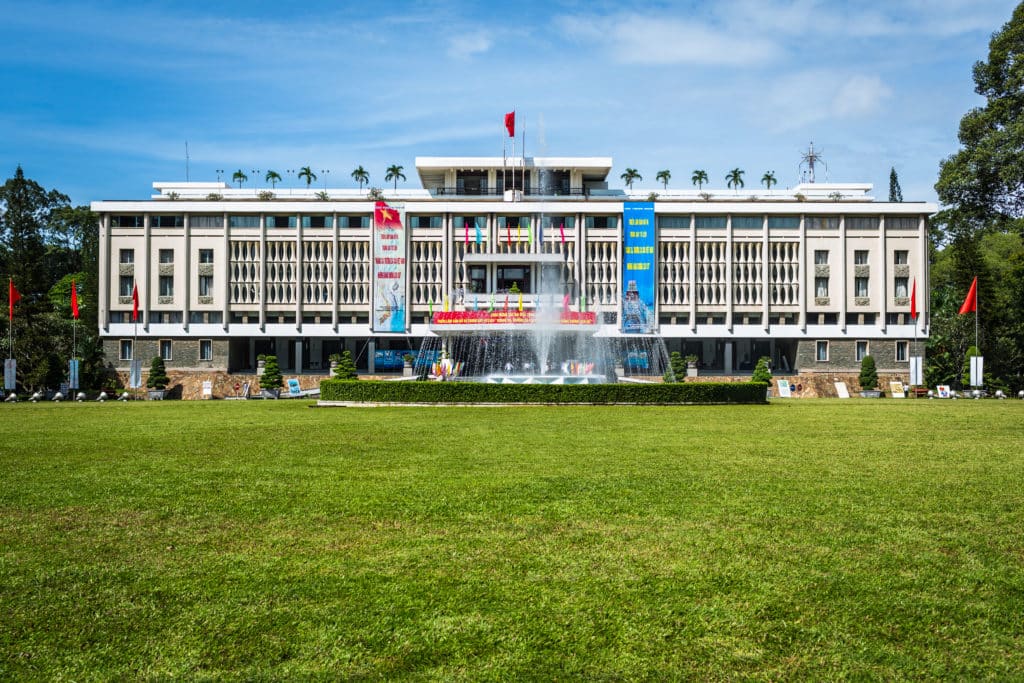
The Independence Palace, also called the Reunification Palace, is a must-visit for historical enthusiasts in Ho Chi Minh City. It achieved international fame in 1975 as a North Vietnamese tank rolled through its gates, bringing about an end to the Vietnam War.
Nowadays, the palace is open to visitors, with 5 different levels telling the history of the building and the war itself. Visitors can witness two of the original tanks used in the attack still within the palace grounds and can marvel at the war command room that still has the original maps and equipment laid out – a moment in history frozen still. The palace also features lush, landscaped gardens to explore.
Home to the South Vietnamese President before his downfall in 1963, the palace is worth a visit for the intriguing 1960s architecture and furnishings, designed with open, breezy corridors with floor-to-ceiling windows, and each room has a fascinating story to tell.
Thich Quang Duc Monument
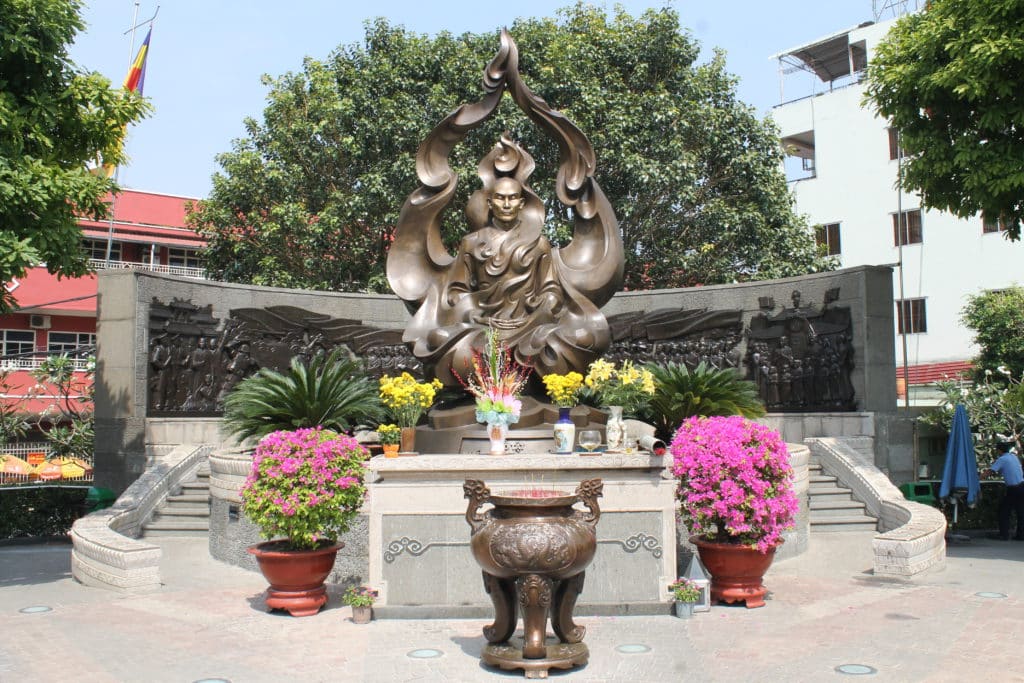
This peaceful memorial park commemorates Thich Quang Duc, the Buddhist monk who self-immolated in protest in 1963. The incredible act took place at this intersection not far from the Independence Palace in Ho Chi Minh.
The statue shows Thich Quang Duc in flames on the busy Ho Chi Minh street, yet unperturbed and serene in faith at the righteousness of his actions.
The park itself covers around 2,000 m², with pleasant tree-lined walking paths around lotus ponds and exquisitely trimmed lawns. It’s the perfect spot to escape the hustle and bustle of the city and offers a contemplative environment in which to consider the profound act of self-sacrifice all those years ago.
Vietnamese History with Discova
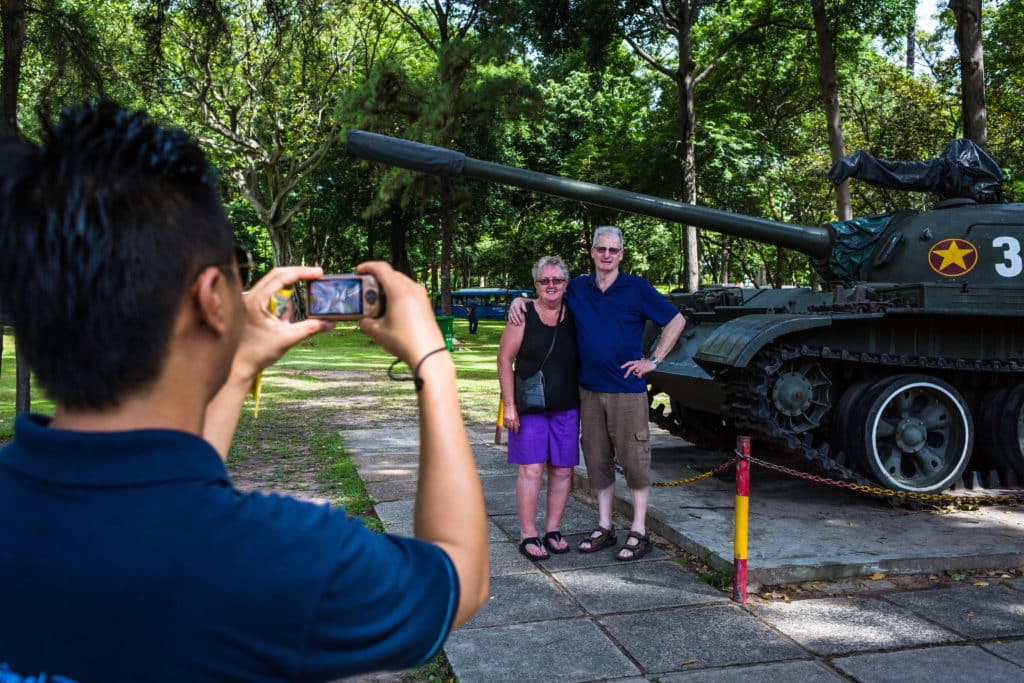
While our eyes are on the future, we have an interest in the past too. We know that many travellers are historical enthusiasts and love to seek out the stories of the places they visit. It helps the process of understanding a country to get to grips with its past. For Vietnam, its recent history is inescapable, and travellers can’t begin to comprehend the modern nation without an appreciation for the context of its turbulent 20th century, particularly concerning the Vietnam War.
With our culture tours in cities such as Hanoi and Ho Chi Minh, we have local expert guides to help build that deep understanding, ready and able to walk visitors down the path of history with unparalleled insights and detail. Don’t hesitate to reach out to our teams for more information about our historical tours and experiences in Vietnam.


